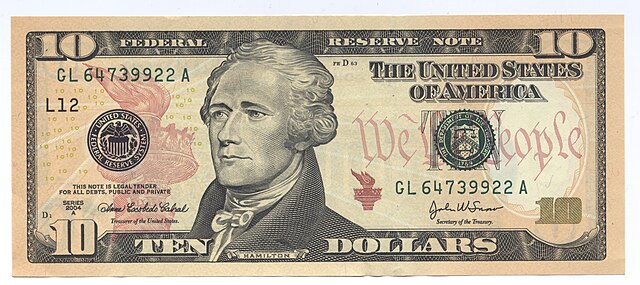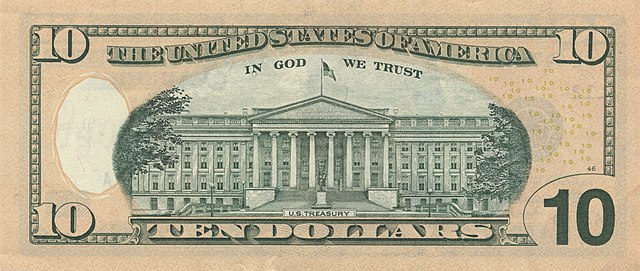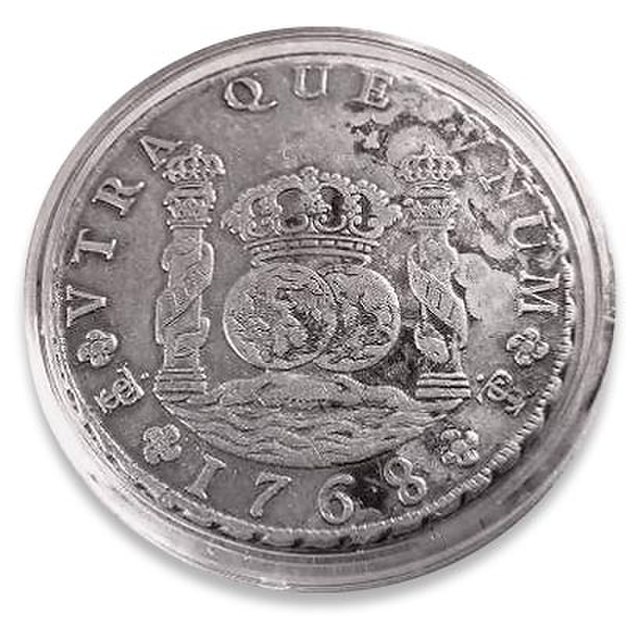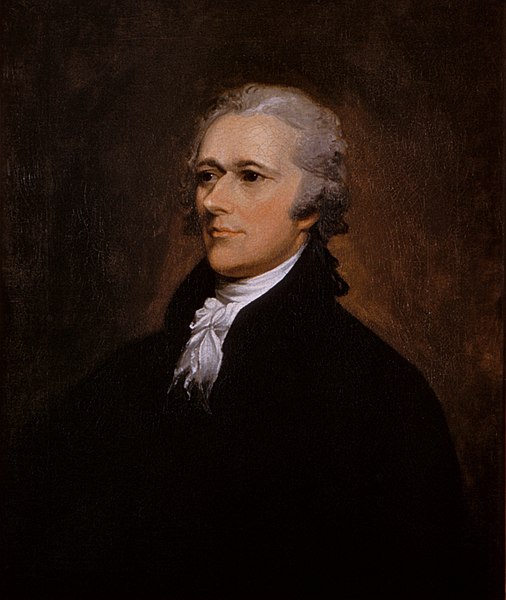United States ten-dollar bill
The United States ten-dollar bill ($10) is a denomination of U.S. currency. The obverse of the bill features the portrait of Alexander Hamilton, who served as the first U.S. Secretary of the Treasury, two renditions of the torch of the Statue of Liberty, and the words "We the People" from the original engrossed preamble of the United States Constitution. The reverse features the U.S. Treasury Building. All $10 bills issued today are Federal Reserve Notes.
Image: US10dollarbill Series 2004A
Image: US $10 Series 2004 reverse
1805 portrait of Hamilton by John Trumbull
1863 $10 Legal Tender note (also known as a "sawbuck") featuring then-current U.S. president Abraham Lincoln
The United States dollar is the official currency of the United States and several other countries. The Coinage Act of 1792 introduced the U.S. dollar at par with the Spanish silver dollar, divided it into 100 cents, and authorized the minting of coins denominated in dollars and cents. U.S. banknotes are issued in the form of Federal Reserve Notes, popularly called greenbacks due to their predominantly green color.
Spanish silver eight-real or peso of 1768
Alexander Hamilton finalized the details of the 1792 Coinage Act and the establishment of the U.S. Mint.
Continental one third dollar bill (obverse)
Series of 1917 $1 United States Note








